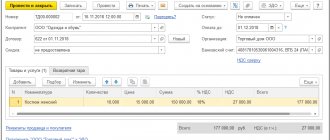Accounting statements of small enterprises can be prepared in two versions - according to the usual templates of reporting documents and according to simplified forms. The choice of a specific reporting scheme depends on the method of accounting. Small enterprises have the right to conduct simplified accounting (clause 4 of article 6 of the law on accounting dated December 6, 2011 No. 402-FZ). If a business entity has taken advantage of this opportunity, then it decides for itself whether its reporting will be presented in an abbreviated format, or the set of reporting should be complete (clause 6 of Order of the Ministry of Finance No. 66n dated 07/02/2010). Methods of accounting and reporting are fixed in the accounting policy.
Simplified accounting reporting
Small enterprises with the right to conduct accounting in a simplified way can submit reports using simplified forms. They are given in Appendix No. 5 to Order No. 66n of the Ministry of Finance of Russia dated July 2, 2010, as amended by Order No. 61n of the Ministry of Finance of Russia dated April 19, 2021.
Machine-readable forms of simplified accounting (financial) statements (form according to KND 0710096) are recommended by the Federal Tax Service of Russia in a letter dated November 25, 2021 No. ВД-4-1/ [email protected]
Simplifying reporting comes down to:
- the balance sheet and the income statement contain a reduced volume of indicators (by groups of items, without detail by item);
- appendices to the balance sheet and financial statements are drawn up if they contain information without which it is impossible to assess the financial position or financial results of the SMP.
Small enterprises that have the right to simplified accounting and simplified financial statements can submit financial statements in full using general forms
Reporting of individual entrepreneurs without employees
The legislator was quite loyal to this category of taxpayers, reducing mandatory reports to a minimum. Individual entrepreneurs are allowed not to keep accounting records, subject to accounting for income, or income and expenses, or other objects of taxation and physical indicators (subclause 1, clause 2, article 6 of Law No. 402-FZ).
As for reporting on taxes and fees, an individual entrepreneur without employees at the end of the calendar year (tax period) submits:
- on the general system - a VAT return and a personal income tax return;
- on the simplified tax system - a declaration for the single tax of the simplified tax system;
- for UTII - a declaration for a single tax on imputed income for certain types of activities.
No more reports needed!
Simplified balance
In the simplified form of the balance sheet, there are significantly fewer sections and indicators than in the standard form: five indicators in the asset and six in the liability. Their values must be given for three years as of December 31.
In the enlarged lines of the balance sheet, you need to put the code of the indicator that has the largest share in the composition of this indicator.
If your company needs to explain some indicators of the balance sheet and income statement, then you also need to draw up explanations for them. They need to provide only the most important information, without which it is impossible to assess the financial condition of the company.
Article
Not all companies are eligible to submit a simplified balance sheet for small businesses in 2021. Who can draw up a simplified balance sheet and its sample, see the article.
Simplified accounting reporting: who submits
Organizations that are classified as small businesses have the right to submit simplified financial statements. For such companies, the average number of employees for the previous calendar year should not exceed 100 people, and revenue for the same period should be within 800 million rubles.
In addition, there are restrictions on the authorized capital. Thus, the share of participation of Russia, regional and local authorities, foreign legal entities and individuals, public, religious and charitable organizations should not exceed 25% in the authorized capital. The share owned by other companies that are not small should also not be higher than 25%.
Small companies that are subject to mandatory audit are not entitled to use simplified forms of financial statements (clause 1, part 6 of the Federal Law of December 6, 2011 No. 402-FZ “On Accounting”). For example, joint stock companies.
- Related articles:
- It has become dangerous to embellish balances in order to get a loan.
- OKVED in the balance sheet for 2021
- Interim balance sheet upon liquidation of an LLC: sample 2021 - 2018
- Balance sheet with transcript: Form 1 for 2021
Also, you cannot use a simplified balance sheet for small businesses in 2018 if you need to provide additional information in your reporting to assess the financial position of the business. After all, additions are not made to simplified forms.
- The most important thing about reporting!
- Examples of filling out calculations for contributions from the Federal Tax Service
- New rules for filling out 6-NDFL
- There are new reporting requirements for small companies
Balance sheet form for small businesses in 2021
A simplified form of balance sheet for small enterprises was approved by Order of the Ministry of Finance dated July 2, 2010 No. 66n. You can find it in Appendix No. 5 to the order of the Ministry of Finance.
Unlike general forms, a simplified balance sheet greatly facilitates the work of accountants, since it indicates the composition of indicators and their grouping.
Companies are required to submit an annual simplified balance sheet form to the tax office and statistical authorities at their location. This should be done no later than March 31 after the reporting year. That is, a simplified balance sheet for small businesses in 2018 should be submitted before April 2, 2021. Since March 31st is a Saturday, a day off.
Simplified accounting reporting form 2021: download for free
You can distinguish the simplified financial reporting form - 2021 from the usual one by the number of lines in the forms. In the general balance sheet form, there are 15 lines each to reflect asset and liability items. In addition, it has a column “Explanations”. It is filled out if an explanatory note is drawn up for the accounting reports and it contains comments on a particular article of the form.
In the simplified form of the balance sheet, there are five lines for reflecting asset items and six for liability items, and the “Explanations” column is not provided.
You can download the simplified financial statements form -2018 for free on the website of the electronic journal “Glavbukh” in the “Forms” section or from the link below.
Simplified balance sheet: sample filling
In the simplified form of the balance sheet for small enterprises, the indicators are combined, and therefore in the lines you need to indicate the code whose indicator has the greatest share in the consolidated indicator.
In all forms, after the “Indicator name” column, you should add a column in which you must indicate line codes. These codes are contained in Appendix No. 4 to Order No. 66n of the Ministry of Finance.
- Related articles:
- What wiring are you worrying about in vain - situations from the Ministry of Finance
- The deadline for submitting the balance sheet for 2021 is in 2021
- Reporting deadlines for 2021: table
What to reflect on each line of the simplified balance sheet. We showed it in the table at the end of the article.
Sample of filling out a simplified balance sheet in 2018
Balance sheet under the simplified tax system for 2021 in 2021
Many accountants ask whether it is necessary to submit a balance sheet for 2021 under the simplified tax system? All companies operating under the simplified system are required to maintain accounting and submit accounting reports. The exception is individual entrepreneurs. They are not required to keep accounting records and submit a balance sheet to the simplified tax system (subclause 1, clause 2, article 6 of the Federal Law of December 6, 2011 No. 402-FZ).
The instructions for filling out a balance sheet under the simplified tax system are no different from the procedure for filling out a balance sheet by companies under other tax regimes. The annual balance sheet should provide data on the assets and liabilities of the organization as of December 31 of the reporting year. In addition, the balance sheet must reflect similar data as of December 31 of last year and the year before. What is included in each line of the balance sheet under the simplified tax system, see in the table.
What to show for each line of the simplified balance sheet: table
Name of balance sheet items
Line code
Accounting accounts (in particular)
| ASSETS | ||
| Tangible non-current assets | 1150 | The difference between account balances: – 01 “Fixed assets” – 02 “Depreciation of fixed assets” (excluding depreciation accrued on objects of profitable investments in material assets) The difference between account balances: – 03 “Income-generating investments in tangible assets” – 02 “Depreciation of fixed assets” (in terms of depreciation accrued on these objects) Account balance: – 07 “Equipment for installation”; – 08 “Investments in non-current assets”, including the balance of account 08 in terms of expenses for the development of mineral resources (these expenses can later be qualified as fixed assets). With the exception of the balance on account 08 regarding expenses for the development of mineral resources, which in the future may be classified as intangible assets |
| Intangible, financial and other non-current assets | 1110 | Difference between account balances: – 04 “Intangible assets” – 05 “Amortization of intangible assets” Account balance: – 09 “Deferred tax assets” – other non-current assets that are not reflected in other groups of items in the section “Non-current assets” Account balance 08 (in terms of expenses for the development of mineral resources). These expenses may later be classified as intangible assets Account balance: – 58 “Financial investments” in terms of long-term investments (minus the balance in account 59 “Provisions for depreciation of financial investments” related to long-term financial investments) – 55 “Special accounts in banks” subaccount 3 “Deposit accounts” (in parts of long-term investments and deposits for a period of more than a year, if interest accrues on them) – 73 “Settlements with personnel for other operations” (in terms of interest-bearing loans with a repayment period after 12 months after the reporting date) Account debit balance: – 60 “Settlements with suppliers and contractors” (suppliers’ receivables for advances paid by the organization are reflected in the balance sheet minus VAT)4 |
| Reserves | 1210 | Account balance: – 10 “Materials” – 11 “Animals for growing and fattening” – 20 “Main production” – 21 “Semi-finished products of own production” – 23 “Auxiliary production” – 29 “Service production and farms” – 41 “Goods” (minus the credit balance on account 42 “Trade margin”, if goods are included in sales prices) – 43 “Finished products” – 44 “Sales expenses” – 45 “Goods shipped” – 46 “Stages completed for work in progress” – 97 “ Deferred expenses" - 15 "Procurement and acquisition of material assets" - plus (minus) debit (credit) balance on account 16 "Deviation in the cost of material assets" - minus credit balance on account 14 "Reserves for reduction in the value of material assets" - 19 “Value added tax on acquired assets” |
| Cash and cash equivalents | 1250 | Account balance: – 50 “Cash” (except for the balance in the “Cash Documents” subaccount) – 51 “Settlement accounts” – 52 “Currency accounts” – 55 “Special accounts in banks” (except for amounts included in financial investments ) – 57 “Translations on the way” |
| Financial and other current assets | 1240 | Account balance: – 58 “Financial investments” in terms of short-term investments (minus the balance in account 59 “Provisions for impairment of financial investments” related to short-term financial investments) – 55 “Special accounts in banks” subaccount 3 “Deposit accounts” (in part of short-term investments and deposits for a period of less than a year, if interest accrues on them) – 73 “Settlements with personnel for other operations” (in terms of interest-bearing loans with a repayment period of less than 12 months after the reporting date) Balance on debit accounts: – 60 “Settlements with suppliers and contractors" (suppliers' receivables for advances paid by the organization are reflected in the balance sheet minus VAT)4 - 62 "Settlements with buyers and customers" - 71 "Settlements with accountable persons" - 73 "Settlements with personnel for other transactions" (except interest-bearing loans) – 75 “Settlements with founders” – 76 “Settlements with various debtors and creditors” – 68 “Settlements for taxes and fees” – 69 “Settlements for social insurance and security” - minus account balance 63 “Provisions for doubtful debts » – 50 “Cash” (in terms of the balance of the “Cash Documents” sub-account) – 76 “Settlements with various debtors and creditors” (in terms of VAT accrued on the amounts of advance payments) – 79 “Intra-business settlements” (in terms of settlements under the agreement trust management of property) - 94 “Shortages and losses from damage to valuables” - other current assets that are not reflected in other groups of articles in the section “Current assets” |
| Balance | 1600 | Row sum: 1150 + 1110 + 1210 + 1250 + 1240 |
| PASSIVE | ||
| Capital and reserves | 1310 | Account balance: – 80 “Authorized capital” – 82 “Reserve capital” – 83 “Additional capital” – 84 “Retained earnings (uncovered loss)” 7 – 99 “Profits and losses” (in interim reporting) Account debit balance 81 “Own shares (shares)”8 |
| Long-term borrowed funds | 1410 | Balance of account 67 “Settlements on long-term loans and borrowings” (minus debts whose maturity as of the reporting date is less than 12 months) |
| Other long-term liabilities | 1450 | Account credit balance: – 60 “Settlements with suppliers and contractors” – 62 “Settlements with buyers and customers” (accounts payable to buyers for advances received by the organization are reflected in the balance sheet minus VAT) – 73 “Settlements with personnel for other operations” – 75 “Settlements with founders” – 76 “Settlements with various debtors and creditors” (in terms of long-term accounts payable) Account balances: – 96 “Reserves for future expenses” (in terms of reserves created for events that will occur no earlier than in a year ) |
| Short-term borrowed funds | 1510 | Balance on account 66 “Settlements on short-term loans and borrowings” plus the balance on account 67 “Settlements on long-term loans and borrowings” (in terms of debts, the repayment period of which as of the reporting date is no more than 12 months)9 |
| Accounts payable | 1520 | Account credit balance: – 60 “Settlements with suppliers and contractors” – 62 “Settlements with buyers and customers” (accounts payable to buyers for advances received by the organization are reflected in the balance sheet minus VAT) – 70 “Settlements for wages” – 68 “ Calculations for taxes and fees" - 69 "Settlements for social insurance and security" (in terms of debt) - 71 "Settlements with accountable persons" - 73 "Settlements with personnel for other transactions" - 75 "Settlements with founders" - 76 "Settlements with different debtors and creditors" (in terms of short-term accounts payable) |
| Other current liabilities | 1550 | Account balances: – 96 “Reserves for future expenses” (in terms of reserves created for events that will occur during the year) – 98 “Deferred income” – 79 “Intra-business settlements” (in terms of settlements under the property trust management agreement) – other short-term liabilities |
| Balance | 1700 | Row sum: 1310 + 1410 + 1450 + 1510 + 1520 + 1550 |
https://www.glavbukh.ru/art/88532-uproshchennyy-balans-2018?utm_social=o…
Simplified income statement
The income statement for small firms consists of seven lines. Data must be reflected for the reporting year and the previous year. Expenses and losses are shown in brackets. Revenue, as always, must be reflected net of VAT and excise taxes, and expenses for ordinary activities include cost of sales, selling and administrative expenses.
The formation of items in a simplified form of the financial results statement is shown in the table.
| Name of simplified report lines | Name and line codes of the standard report |
| Revenue | Revenue (2110) |
| Expenses for ordinary activities | Cost of sales (2120), selling expenses (2210) and administrative expenses (2220) |
| Percentage to be paid | Interest payable (2330) |
| Other income | Other income (2340) |
| other expenses | Other expenses (2350) |
| Income taxes (income), including current income tax, deferred income tax | Code 2410 or 2460 is assigned depending on which indicator has the greatest share when forming the line: income tax or other (tax paid in connection with the application of a special tax regime) |
| Net income (loss) | Net profit (loss) (2400) |
Which enterprises are small
The law establishes several criteria that companies and individual entrepreneurs must meet in order to be considered small businesses. Their values are periodically adjusted. The following criteria currently apply:
- The amount of income is no more than 800 million rubles for the previous year. It is income, not revenue, as was previously the case. This means all income that is taken into account for tax purposes.
- No more than 100 employees based on the average number of employees for the previous year.
- If the company’s share belongs to legal entities, then restrictions apply: the share of charitable and other foundations, public and religious organizations, the Russian Federation and its constituent entities, as well as municipalities can be no more than 25%;
- the share of a foreign legal entity and organization that does not belong to small and medium-sized businesses is no more than 49%.
In some cases, the rules limiting the participation of other legal entities in the capital of a small enterprise (clause 3) may not apply. For example, they are ignored for participants in the Skolkovo project and for organizations whose work is related to the implementation of the results of intellectual activity (know-how, computer programs, etc.). At the same time, other criteria must be met.
However, not every small enterprise can submit simplified reporting. For example, microfinance organizations and legal consultations are prohibited. Any organization whose reporting is subject to mandatory audit must also report in full. The list of entities that cannot submit simplified reporting is given in paragraph 5 of Article 6 of Law 402-FZ.
Simplified report on the intended use of funds
In addition to the balance sheet and statement of financial results, small enterprises must submit a report on the intended use of funds (Order of the Ministry of Finance of Russia dated April 6, 2015 No. 57n).
The report must reflect the balances of target funds at the beginning of the reporting year and at the end of the reporting year.
In the “Funds Received” section, data is entered on funds received in the form of voluntary, membership and entrance fees, as well as on the amount of funds received from the business activities of the enterprise and from other income. Other income includes, in particular, material assistance from the state.
In the “Funds Used” section, the specific purposes for which the targeted funds were allocated (for example, charity or targeted events) are indicated.






